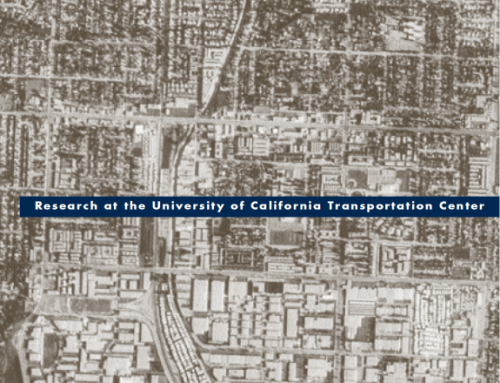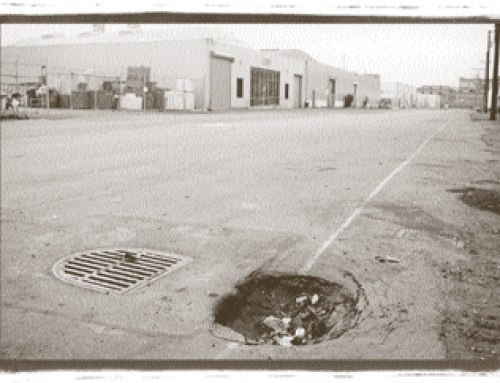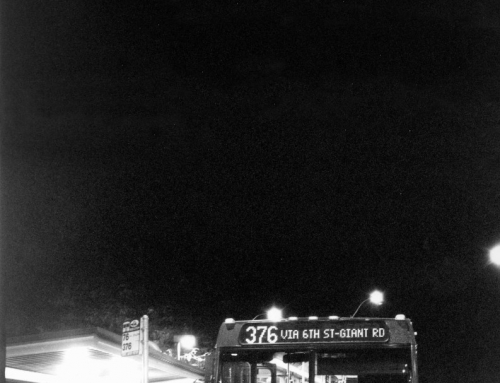[sharelines]Carsharing can create fast and flexible mobility options for diverse users in dense areas.
Worldwide growth in automobile ownership has triggered many ideas for reducing car use. Most popular of course are plans to expand and improve public transit. The array of alternatives is far wider, however. One that I find potentially plausible and promising is the idea of pooling cars.
 It’s an idea that has been tried, especially in Europe, and has sometimes proved successful. Simply put, carsharing is organized short-term car rental, aimed at increasing an individual car’s use while promoting transit riding. Shared vehicles provide a community resource at transit stations, neighborhoods, campuses, employment centers, resorts, etc., offering enhanced accessibility where public transit service is unavailable.
It’s an idea that has been tried, especially in Europe, and has sometimes proved successful. Simply put, carsharing is organized short-term car rental, aimed at increasing an individual car’s use while promoting transit riding. Shared vehicles provide a community resource at transit stations, neighborhoods, campuses, employment centers, resorts, etc., offering enhanced accessibility where public transit service is unavailable.
Carsharing organizations (CSOs) have emerged, some acquiring fleets of low-emission, energy-efficient cars that they offer on a membership basis. Because the CSOs are responsible for car maintenance, there’s an incentive for them to perform repairs properly, thus helping reduce pollution and energy consumption. Their members profit by gaining use of a car without bearing the full costs of ownership. Transit operators benefit by tapping an expanded market. Motorists benefit from fewer cars on the road, and employers from less demand for parking spaces. (For example, Lufthansa Airlines installed a short-term rental scheme in 1993 for its employees at Munich and Frankfurt airports and averted over $20 million in parking infrastructure costs.) Carsharing appears to be a win-win strategy.
A scenario for successful carsharing in the US might read like this: Mary rides the train on leaving work at the end of the day. Arriving at a station close to home, she uses her “smart card” to rent a shared-use vehicle, then drives the rest of the way home. She uses the car during the evening and drives back to her station in the morning, where she leaves the car. Someone else will use the car during the day, perhaps to get to work or run errands. Meanwhile, Mary rides the train to a stop near her work where she rents another vehicle and drives to her office. This vehicle could then be used by her colleagues for personal and business errands throughout the day.
Both vehicles in this example spend less time idly parked than would a private vehicle used by one person for commuting and errands. By carsharing, travelers can easily use a variety of transportation modes, including public transit. They also forgo responsibility for insurance, maintenance, and parking.
An International Happening
Over the past decade, carsharing has become more common, especially in Europe and North America. There are many ways to implement carsharing, but most efforts involve only a few vehicles shared by a group of individuals. Cars are typically deployed from a neighborhood lot or transit station, and the majority of programs still manage their services and operations manually: users place a reservation with a human operator, get the vehicle key from a self- service key box, and record mileage and use-data themselves.
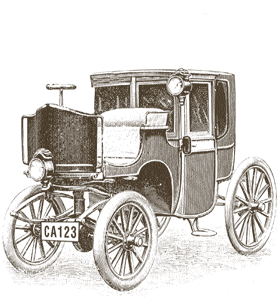 Most carsharing efforts are in Europe and remain small. One of the earliest, the Sefage cooperative, begun in Zurich in 1948, provided use of cars to those who could not afford them. Several other experiments were attempted during the next thirty years, including one in Sweden that began as an experiment in 1983 and lasted until 1998. Though small (35 households shared 5 cars), this program inspired many current Swedish CSOs.
Most carsharing efforts are in Europe and remain small. One of the earliest, the Sefage cooperative, begun in Zurich in 1948, provided use of cars to those who could not afford them. Several other experiments were attempted during the next thirty years, including one in Sweden that began as an experiment in 1983 and lasted until 1998. Though small (35 households shared 5 cars), this program inspired many current Swedish CSOs.
Other successful carsharing groups got started in the late 1980s in Europe. Today there are approximately 200 CSOs in 450 cities throughout Switzerland, Germany, Austria, the Netherlands, Denmark, Sweden, Norway, Great Britain, and Italy. These organizations collectively claim a membership of over 130,000.
The two oldest and largest CSOs are Mobility CarSharing Switzerland, with 1,200 cars, and Stadtauto Drive of Germany, with approximately 300 cars. The Swiss program, begun in 1987, now operates in 800 locations in over 300 communities, with more than 27,000 members. Stadtauto Drive began operations in 1988 and now has approximately 7,000 members.
These two organizations, founded a year apart, evolved independently. Mobility CarSharing Switzerland sprang from a grassroots effort. In contrast, Stadtauto Drive began as a university research project to demonstrate that carsharing could be a viable transportation alternative for Germany. These two are recognized worldwide as modern pioneers of carsharing. Both CSOs grew about 50 percent per year until 1996, and Mobility CarSharing Switzerland continues to grow about 25 percent per year. Stadtauto Drive’s growth rate has slowed more substantially, however.
Stadtauto Drive management attributes the slow growth to several factors. Some members have moved from the inner city to the countryside where access to carsharing and public transit is limited. Others, who use the cars on only rare occasions, find the yearly membership fees too costly and switch to traditional auto rentals. Other members find they require vehicles so often that the effort to reserve shared-use cars becomes too great a burden. Many of them buy private cars and leave the CSO.
European Innovations
As carsharing programs expand beyond 100 vehicles, manually operated systems become expensive and inconvenient, subject to mistakes in reservations, access, and billing. They also become more vulnerable to vandalism and theft. As a result, some CSOs are pressured to enlarge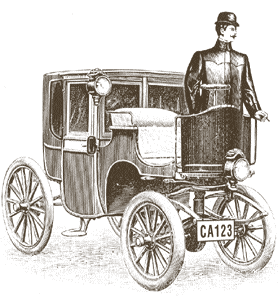 even further and generate revenue to pay for new communication and reservation technologies.
even further and generate revenue to pay for new communication and reservation technologies.
Recently, both Stadtauto Drive and Mobility CarSharing Switzerland have started modernizing, moving from manual “key box” operations to a system of smart cards for automating reservations, accessing vehicle keys, securing vehicles from theft, and billing. The shift to smart cards simplifies vehicle access for customers and eases administration and management of large systems.
In addition to advanced carsharing technologies, large European CSOs are developing a range of new services, including partnerships with transit agencies, car-leasing programs, car rental companies, and taxis. These partnerships include business and marketing collaborations and, in many cases, smart-card technology. The alliances promise many benefits and possibilities for CSOs, as seen in the Swiss Zuger Pass Plus program, which bundles carsharing, public transit, car rental, taxi, and bicycle rentals into a sort of frequent-flyer program. Another Swiss program, Easy-Ride, connects practically every public transportation company in Switzerland, including rail, bus, taxi, carsharing, and car rental. Smart cards simplify ticketing and marketing and encourage travelers to use several transport modes.
Developments in Asia
In recent years carsharing experiments have cropped up in Singapore and Japan. The high cost of owning a car in Singapore may be a reason that within a few weeks of its announcement, 150 people signed up to participate in a carsharing program that had room for only 80. Present 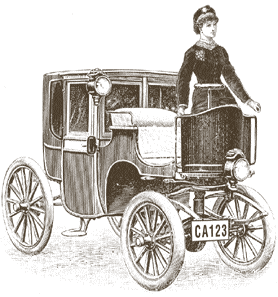 participants live in a large, high-rise development and share four cars. Two other condominium complexes are testing their own programs, with one car for every forty residents.
participants live in a large, high-rise development and share four cars. Two other condominium complexes are testing their own programs, with one car for every forty residents.
In October 1997, the Honda Motor Company launched a test carsharing system, called the Intelligent Community Vehicle System, in Motegi, Japan. Participants have access to four types of electric vehicles at several sites. Using a smart card, participants can reserve, unlock, and start the vehicles, eliminating the need for ignition keys. Fees can be automatically deducted from participants’ accounts. Other high-tech attributes of this system include global positioning for up-to-the-minute monitoring of vehicle location, platooning technologies that allow a worker driving a lead car to collect unoccupied vehicles and guide them to a port, an auto-driving function so cars can conveniently meet users, and an autocharging system that instructs the vehicles to dock at a charging terminal when batteries are low.
Sharing Cars in North America
Two formal carsharing projects were undertaken in the US in the 1980s. Researchers at Purdue University conducted a field test that offered short-term rentals of minicars as well as a special-purpose fleet of large sedans and trucks. The study found that the minicars were used for 75 percent of participating households’ vehicle miles of travel, while the special-purpose fleet was used 35 percent of the time it was available.
STAR, or Short-Term Auto Rental, began operating as a private carsharing enterprise in 1983 at a large (9,000 resident) apartment complex in San Francisco. STAR kept its rental rates low to discourage auto ownership, and it saved money by buying used economy-class vehicles. At its peak the company maintained a fleet of 51 vehicles and had a membership of 350. However, the operation failed halfway through its planned three-year program.
The primary problem was the low and erratic income of many of the tenants, some of them students sharing apartments and not listed on the rental lease, and many not credit-worthy. STAR’s pricing structure, which encouraged long-term as well as short-term rentals, also invited 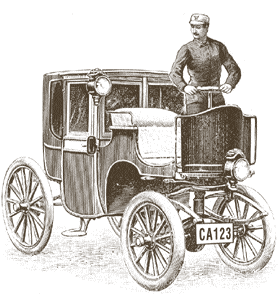 problems such as long-distance towing charges incurred when the older vehicles broke down far from San Francisco.
problems such as long-distance towing charges incurred when the older vehicles broke down far from San Francisco.
I know about nine carsharing organizations in North America, five of them in Canada. All are small, and none yet uses smart technologies. Four are run for profit; the others are nonprofits. At present, a smart carsharing demonstration program in northern California (known as CarLink) is testing and evaluating several state-of-the-art communication and reservation technologies. The CarLink field test, which is currently being conducted in the Dublin-Pleasanton region of northern California, is cosponsored by the Institute of Transportation Studies at UC Davis and its partners—the Bay Area Rapid Transit District (BART), American Honda Motor Company, Caltrans, UC’s Lawrence Livermore National Laboratory (LLNL), Teletrac (a company that provides vehicle tracking technologies), and INVERS (which developed a key management system). Approximately sixty participants use smart keys and an Internet reservation system to share twelve Hondas fueled by compressed natural gas (CNG). The cars are based at the Dublin-Pleasanton BART Station and at LLNL, about fifteen miles away. Three different types of participants pay different rates.
Homeside users drive a CarLink vehicle between the BAR T station and home each day, keeping the car overnight and on weekends for personal use. They pay a $200 monthly fee, which includes a tank of CNG fuel, insurance, and maintenance costs. Workside commuters take BART to the Dublin-Pleasanton station and drive a CarLink vehicle to and from LLNL. Their $60 monthly fee, again for fuel, insurance, and maintenance, can be shared with coworkers by carpooling. Day users pick up a CarLink vehicle at either BART or LLNL and use it for business trips or personal errands during the day for $1.50 per hour plus $.10 per mile.
In southern California, a similar demonstration program (called Intellishare) employs electric vehicles, smart cards, and on-board computer automatic-vehicle-location technologies. Carsharing programs using smart technologies are potentially more convenient and reliable, which could make them attractive to users and increase the likelihood of their use and success.
What Have We Learned?
To date, all noncorporate carsharing organizations in Europe began as small local operations, usually with government funding and inspired by ideological concerns about car dependence and negative effects of cars on urban settlements.
One study concluded that new start-up CSOs are likely to succeed if they remain self-organizing and local for a long time. Recent history suggests it is difficult to transform a small, often neighborhood-based, grassroots CSO into an economically viable business. Many have miscalculated the number of vehicles needed, placed too great an emphasis on advanced technology, or expended funds for marketing with little return. In Europe, many of the failed organizations have merged or been acquired by larger European CSOs.
Several surveys of carsharing users have been conducted in Europe, and although most were limited to simple questionnaires among small sample populations, they do provide useful insight. A survey in Switzerland and Germany found users were between 25 and 40 years of age with an above-average education, were likely to be male, earned a below-average income, and were sensitive to environmental and traffic problems.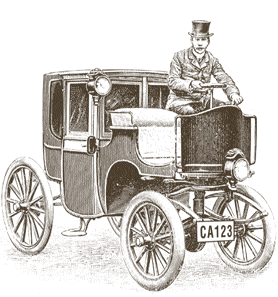
Another European study surveyed individuals who had not participated in carsharing. The principle reasons for not joining were the unprofessional image of many CSOs, an insufficient variety of products and services, higher costs than transit, a system that was “complicated, impractical, and time consuming,” and vehicles not readily available near home.
In Europe, the model CSO is one whose vehicles are used intensively by customers who drive infrequently for relatively short distances. While CSOs require frequent use to keep prices low, they are most economical for drivers who use cars sparingly. Stadtauto Drive reports that their vehicles average 21,250 miles per year, compared to 9,060 miles of the average German car. Trips tend to be short: 77 percent less than 24 hours, and 56 percent ranging between 12 and 62 miles. Average occupancy of a Stadtauto Drive vehicle is two persons, compared to the German average of 1.3. Individual members drive less than half the mileage of the average private car driver.
Another study of Mobility Carsharing Switzerland found the trip expenses of early members were reduced by $1,700 annually, and that carsharing is cost-effective for users who drive less than 5,630 miles per year. Car mileage for individuals who had owned private vehicles was reduced 33 to 50 percent after they joined the CSO. Most members increased their public transportation use. (Differences in land use and transit use patterns indicate that such a dramatic reduction in car usage is probably much greater in Europe than we could expect in North America.)
Conclusions
CSOs are more likely to be economically successful where they provide a dense network and variety of vehicles, serve a diverse mix of users, create joint-marketing partnerships with other transit companies, offer flexible yet simple rate systems, and provide for easy emergency access to taxis and long-term car rentals. They are most likely to thrive where environmental consciousness is high, driving disincentives such as high parking costs and traffic congestion are pervasive, car-ownership costs are high, and alternative modes of transportation are easily accessible.
CSOs may be precursors of a new kind of mobility-service company. As car ownership proliferates and vehicles become more modular and specialized, entrepreneurial companies may see an opportunity to offer full transport services at work sites, transit stations, shopping centers, and in neighborhoods, based on partnership-management strategies. Carsharing organizations could lead the way to a whole new range of transportation options for many.
Further Readings
Susan Shaheen, “CarLink: A Smart Carsharing System,” Intellimotion, v. 8, no. 1, pp. 1-3 and 13, 1999.
Susan Shaheen, Daniel Sperling, and Victoria Nerenberg, “Smart CarLinking in the San Francisco Bay Area: A Market Evaluation,” ITS America Eighth Annual Meeting, May, 1998. UCD-ITS-IP-98-2.
Conrad Wagner and Susan Shaheen, “Car Sharing and Mobility Management: Facing New Challenges with Technology and Innovative Business Planning,” World Transportation Policy and Practice, v. 4, no. 2, pp. 39-43, 1998. UCD-ITS-RP-98-11.

